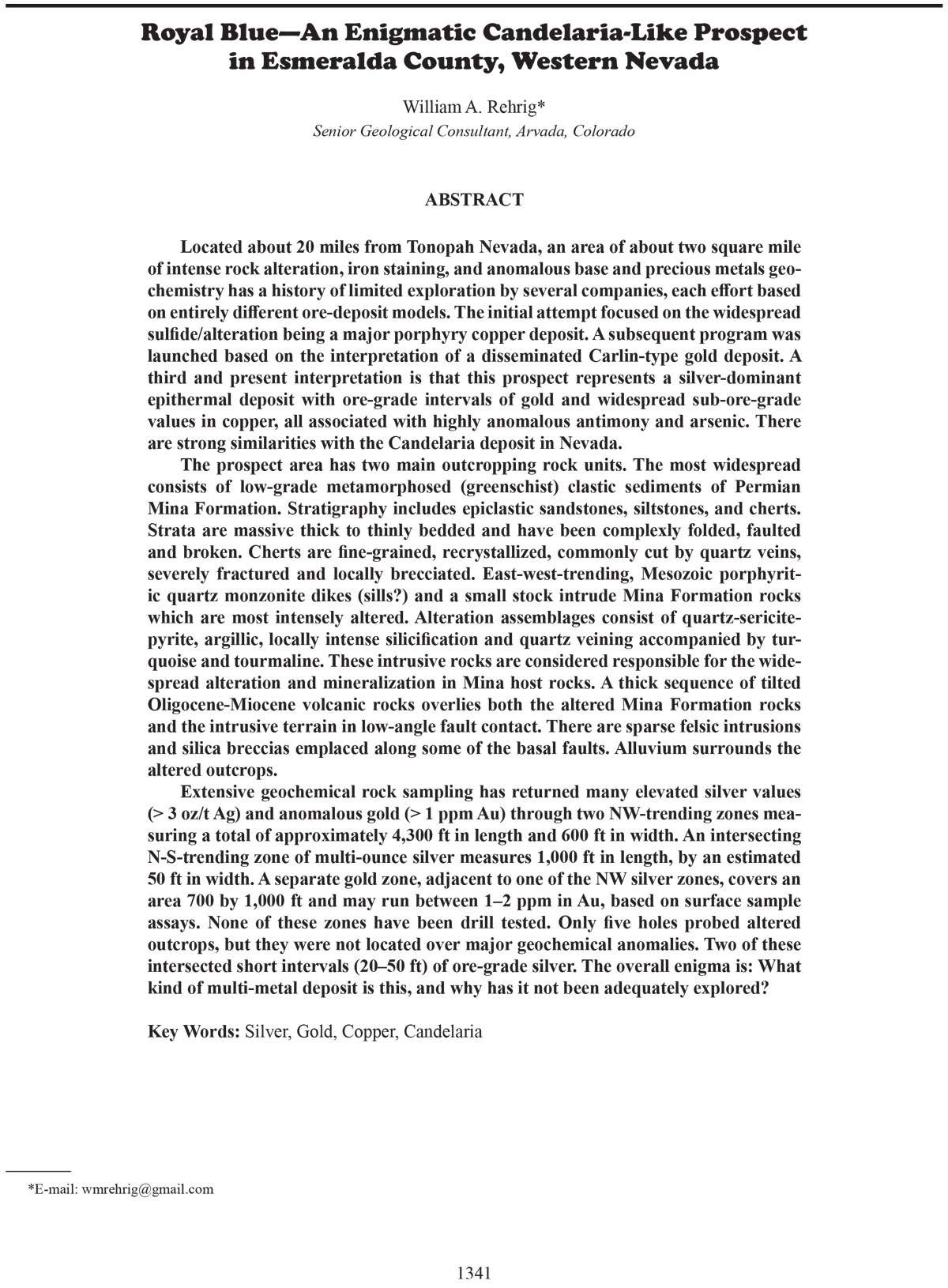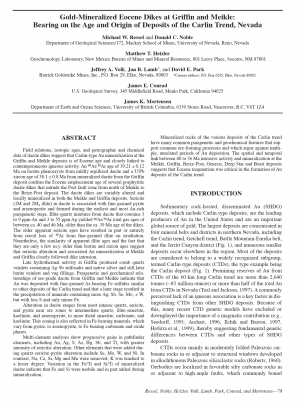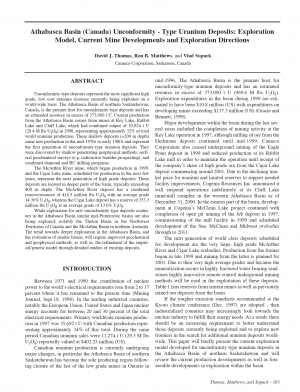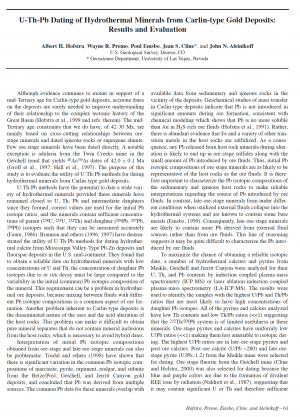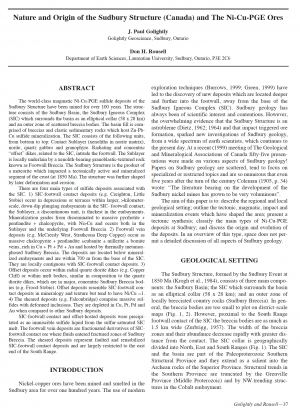Description
Located about 20 miles from Tonopah Nevada, an area of about two square mile
of intense rock alteration, iron staining, and anomalous base and precious metals geochemistry has a history of limited exploration by several companies, each effort based
on entirely different ore-deposit models. The initial attempt focused on the widespread
sulfide/alteration being a major porphyry copper deposit. A subsequent program was
launched based on the interpretation of a disseminated Carlin-type gold deposit. A
third and present interpretation is that this prospect represents a silver-dominant
epithermal deposit with ore-grade intervals of gold and widespread sub-ore-grade
values in copper, all associated with highly anomalous antimony and arsenic. There
are strong similarities with the Candelaria deposit in Nevada.
The prospect area has two main outcropping rock units. The most widespread
consists of low-grade metamorphosed (greenschist) clastic sediments of Permian
Mina Formation. Stratigraphy includes epiclastic sandstones, siltstones, and cherts.
Strata are massive thick to thinly bedded and have been complexly folded, faulted
and broken. Cherts are fine-grained, recrystallized, commonly cut by quartz veins,
severely fractured and locally brecciated. East-west-trending, Mesozoic porphyritic quartz monzonite dikes (sills?) and a small stock intrude Mina Formation rocks
which are most intensely altered. Alteration assemblages consist of quartz-sericitepyrite, argillic, locally intense silicification and quartz veining accompanied by turquoise and tourmaline. These intrusive rocks are considered responsible for the widespread alteration and mineralization in Mina host rocks. A thick sequence of tilted
Oligocene-Miocene volcanic rocks overlies both the altered Mina Formation rocks
and the intrusive terrain in low-angle fault contact. There are sparse felsic intrusions
and silica breccias emplaced along some of the basal faults. Alluvium surrounds the
altered outcrops.
Extensive geochemical rock sampling has returned many elevated silver values
(> 3 oz/t Ag) and anomalous gold (> 1 ppm Au) through two NW-trending zones measuring a total of approximately 4,300 ft in length and 600 ft in width. An intersecting
N-S-trending zone of multi-ounce silver measures 1,000 ft in length, by an estimated
50 ft in width. A separate gold zone, adjacent to one of the NW silver zones, covers an
area 700 by 1,000 ft and may run between 1–2 ppm in Au, based on surface sample
assays. None of these zones have been drill tested. Only five holes probed altered
outcrops, but they were not located over major geochemical anomalies. Two of these
intersected short intervals (20–50 ft) of ore-grade silver. The overall enigma is: What
kind of multi-metal deposit is this, and why has it not been adequately explored?

